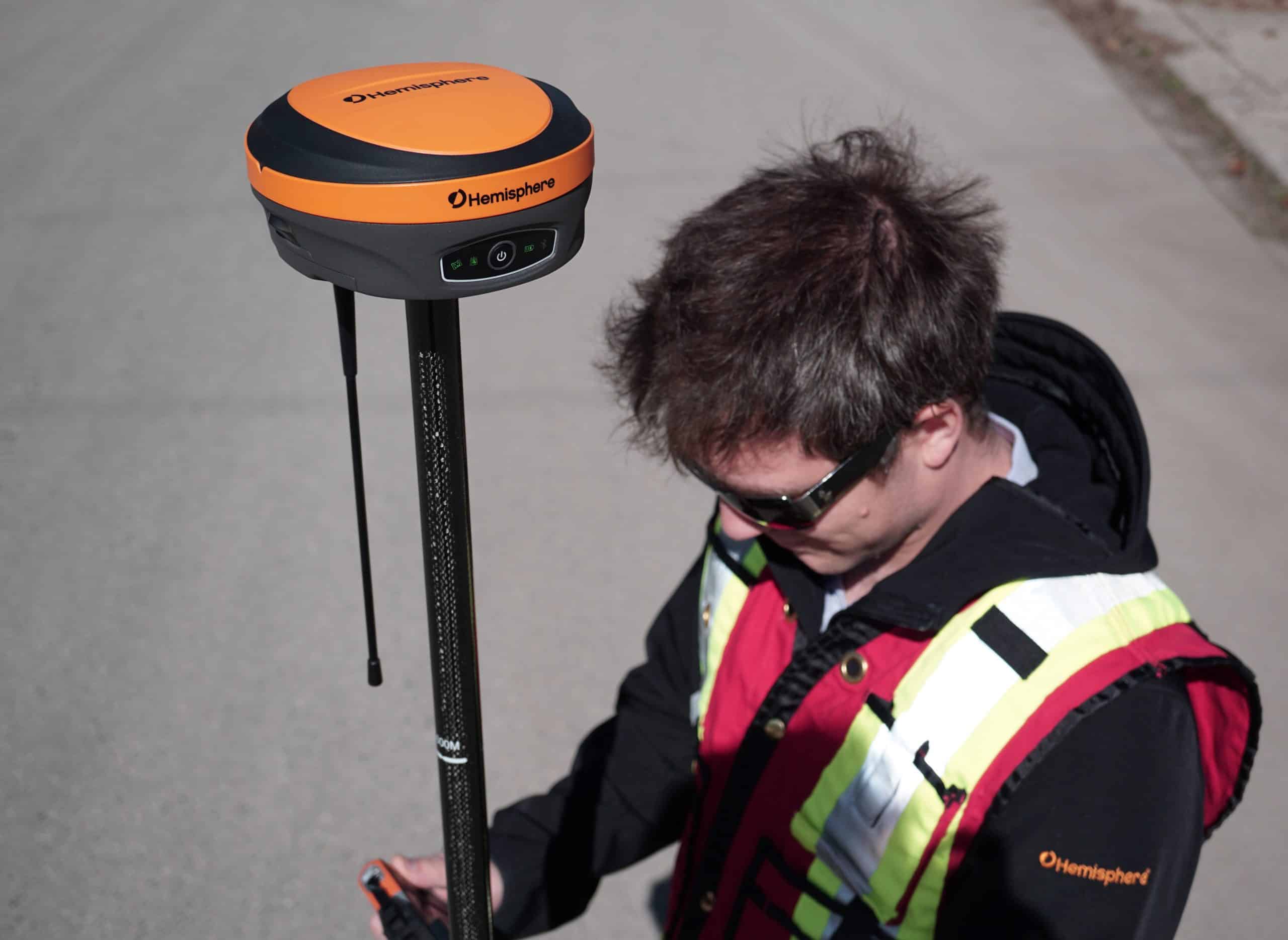
When looking to purchase an RTK system, there are a lot of different factors that have to be considered. One of the most important is to consider what kind of setup is best for you; a base and rover or is a network rover better? There are several pros and cons to both setups, and understanding how these factors influence your workflow, is important to getting the most out of your equipment. By analyzing all the factors that go into each setup, you can make an informed purchasing decision and ensure you get the equipment that best meets your needs.
Before going into the pros and cons of each setup, it is important to understand the basic differences between each setup. A base and rover solution relies on a physical base station to broadcast corrections, of which you have full control. Typically, this setup consists of two receivers and a data collector with software. A network rover solution typically presents in one of two setups, one where you connect to a virtual reference station (VRS) or one where you connect to a physical reference station. In both cases you do no typically have control over the network, but subscribe to a third-party service. This setup generally contains a single receiver, a data collector and software. Check out the video below for more information.

There are many advantages to a base and rover type solution. A base rover solution offers you total control over your setup, the flexibility to work how you want, lower long-term cost and control over your baselines allowing you to achieve better relative accuracies. In general, a base and rover solution offers the most versatility of any RTK setup.
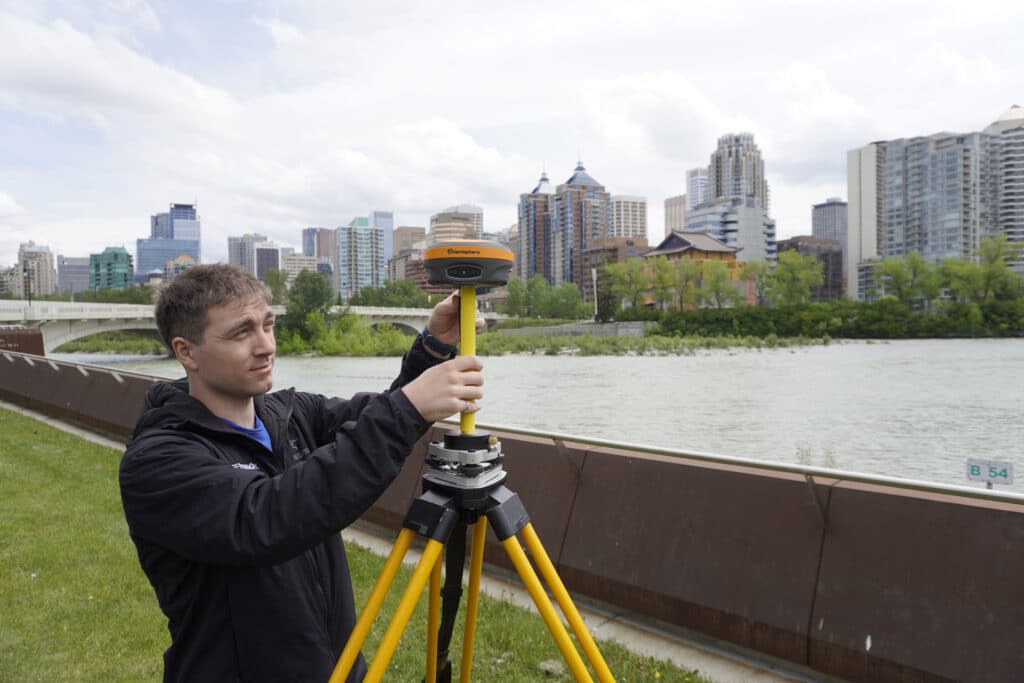
Arguably the most important part of a base and rover setup is the ability to have complete control over your setup. This means that you control how your receivers perform, allowing you to achieve consistent and repeatable results (Check out this video on S631 Repeatability Under Canopy). By running compatible receivers, you can optimize your setup, ensuring that you get the best possible solution for your environment. For instance, with 7th generation RTK receivers, you get access to all of the available constellation signals. With access to more signals, you can perform better in multi-path environments. However, an RTK receiver can only use what a base station can see and broadcast. This means to get the most out of a receiver, you want a base station that can broadcast and use all of the same signals as your rover. Check out this video on comparing a 6th to 7th generation receiver to learn how this can make a difference.
6th vs 7th Generation RTK Technology
A base and rover system also allows you to work how and where you want without worry. With the Hemisphere S631 you can use your receivers as both a network rover or a base and rover. In the next section we will go over how a network rover can meet your needs, but with a base and rover you can get the most of both setups. This type of setup also provides a level of redundancy. If one receiver goes down whether due to an accident or simply needs an update, you have a second receiver to work with. You also have the option to broadcast corrections over UHF or via a cellular network with a service like StormCaster.
S631 Base and Rover Range Test
An often-underrated aspect of the base and rover kit is, that although a higher initial cost, it does work out to be cheaper in the long run when compared to typical network rover setups. With a Hemisphere S631 base and rover setup, there are no additional subscription costs. This system requires no subscriptions whether that be to a network provider or a cellular carrier.
Finally, with a base and rover setup you have complete control over the baseline between your base and rover. The accuracy of your rover position is dependant on the distance from your base station, when you have control over this distance you can plan your project around maximising your accuracy. You can see this effect in the above linked StormCaster RTK range video.
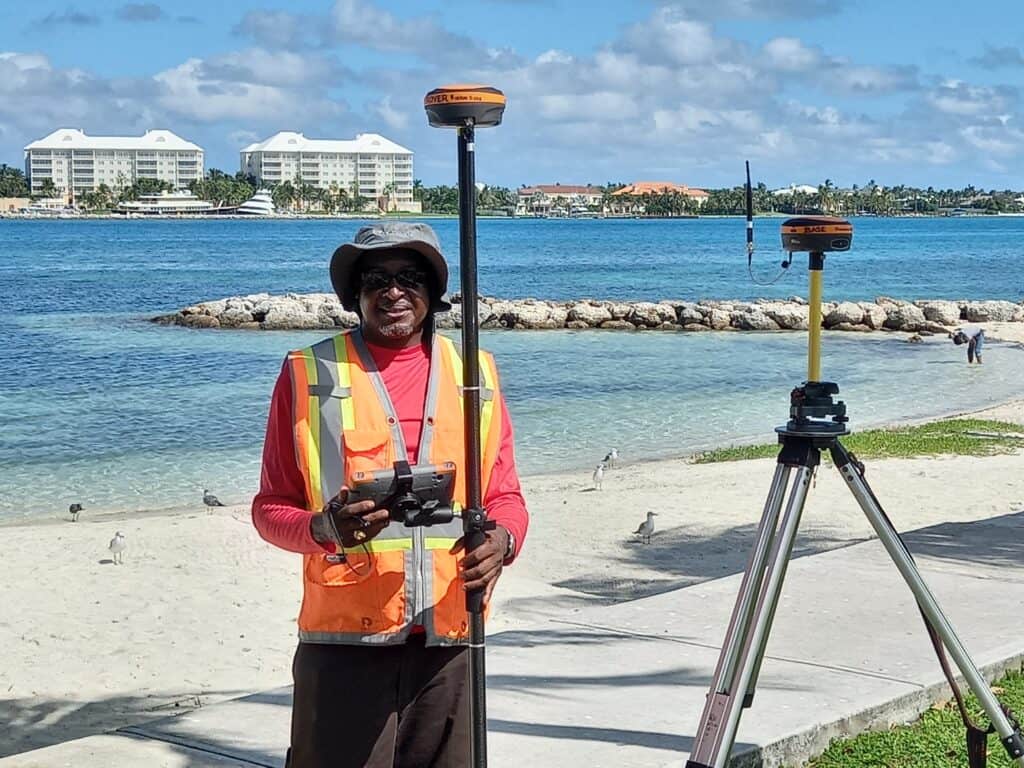
As with the base and rover setup, there are multiple different advantages to having a network rover setup. A network rover allows you easy setups, flexibility and a low initial cost. If a capable and reliable network exists in your area a network rover may be the perfect solution for you.
One of the biggest advantages of a network rover is the ease of setup and the lack of a physical base station. With no base station, you do not have to worry about setting your own base station and tearing it down at the end of the day. You can turn your rover on, connect to the network and begin surveying. On top of this, you do not have to worry about a base station being stolen or damaged while you are surveying elsewhere.
FieldGenius Network Rover Setup
FieldGenius for Android Network Rover Setup
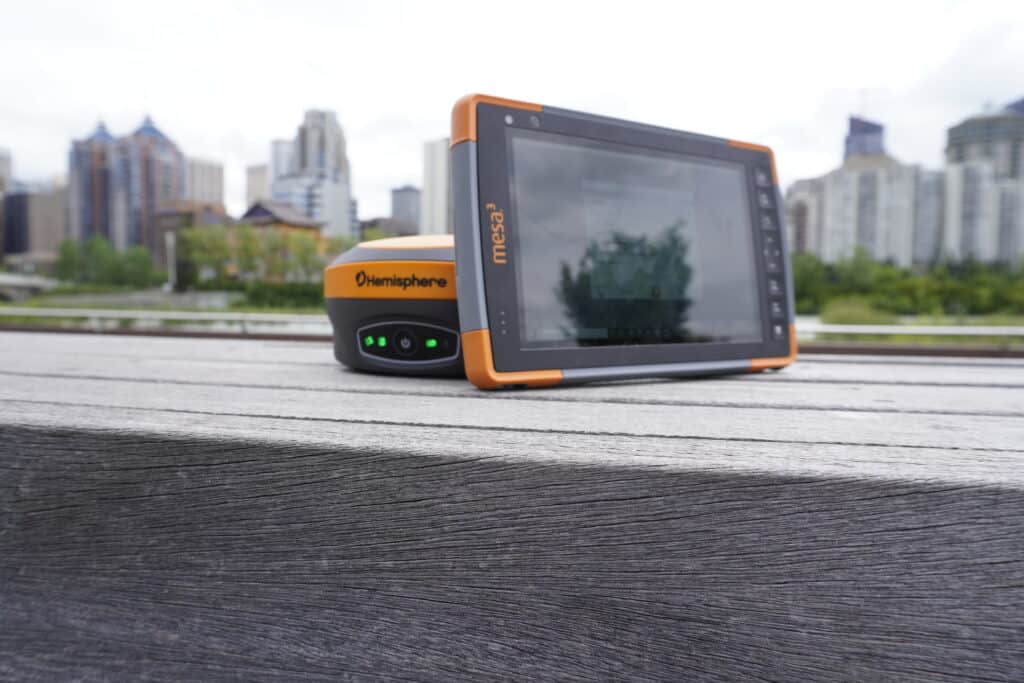
If you are someone who is visiting multiple sites a day, the network rover may be the best solution for you. As long as you have network coverage, of which most North American cities have at least one network option, you can survey. This means that you can arrive on site and start surveying with 2-3 minutes instead of the 10-15 minutes you would take to setup a base and a rover.
The final, and often most important reason to choose a network rover system is the lower initial cost. By choosing to not take the 2nd receiver, you can avoid a big initial cost. As a result, you can invest money in other tools, including a robotic total station or CAD drafting software.
A base and rover solution offers many advantages, however there a couple of disadvantages in a base and rover system that you should know about before purchasing. A base and rover system does have longer setup times, and is limited by range. Understanding how these factors effect how you can work is important in getting the most out of your system.
One of the biggest disadvantages of a base and rover system, especially when compared to a network rover is the setup time. Setting your base up and tearing it down takes time, anywhere from 15-30 minutes a day. This adds up over the course of a week, especially when a network rover setup can take as little as 2-3 minutes. You also have to find a suitable location for the base where it will not be knocked down or stolen. This requires a lot more pre-planning than your average network rover project.
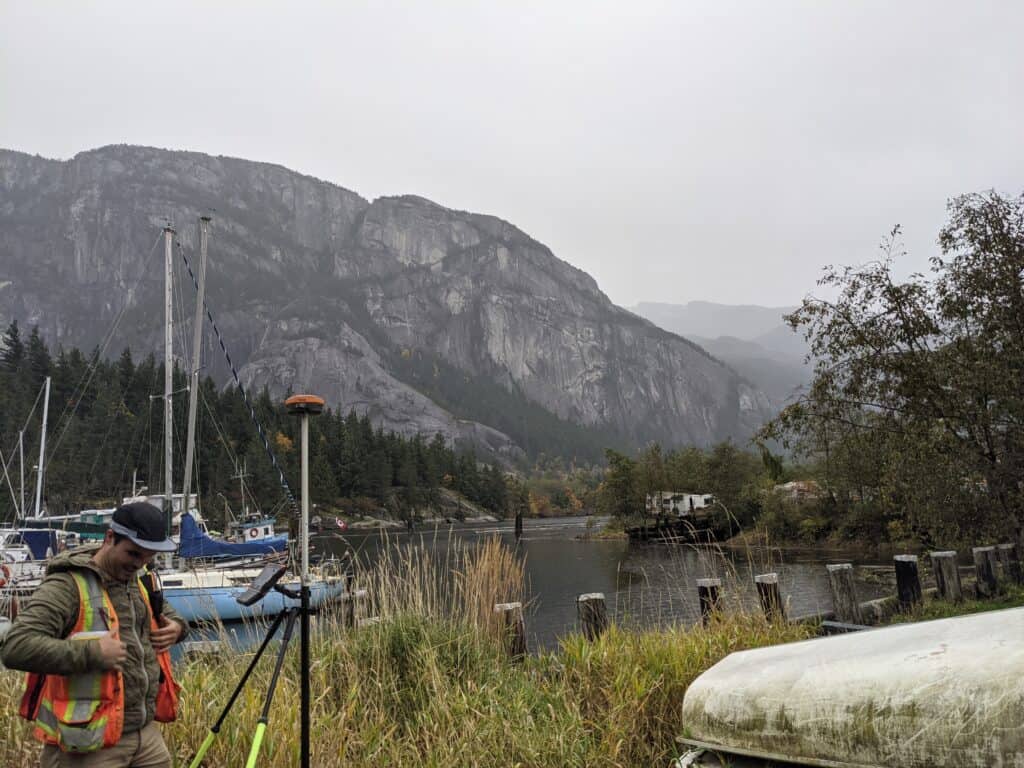
The other drawback to a base and rover setup is the limited range. With a base and rover setup, although you have total control over the setup, you are still limited in the range you can go from the base. Often the limiting feature is the UHF radio range. Whether it is terrain, or you simply have to go further than the radios are capable, you may have to move your base multiple times on the same job to ensure you can collect all the points you need. You can extend the range with an external radio, or a service like StormCaster, but you are still limited by baseline distances.
There are several drawbacks to network rover solutions, all of which need to be considered before purchasing. These include, the availability of your local network, the generation of the network and what message types are available, and the ongoing subscription costs. Although the network rover is appealing at first glance due to the lower cost, there are a lot of potential draw backs.
Depending on where you are located, the coverage available for NTRIP networks may not be able to meet your needs. There are two factors to consider, the availability of a consistent cellular connection, as well the NTRIP network coverage. If you do not have a network connection, you will be unable to access the network, meaning you will be unable to complete your work. In cities and towns, this may not be an issue, however in rural locations you may not have the coverage you need to complete a project. Before subscribing to a network, understand where the coverage is, and where the edges of that coverage exist. The further you are from a base station, the less accurate and repeatable your results will become.
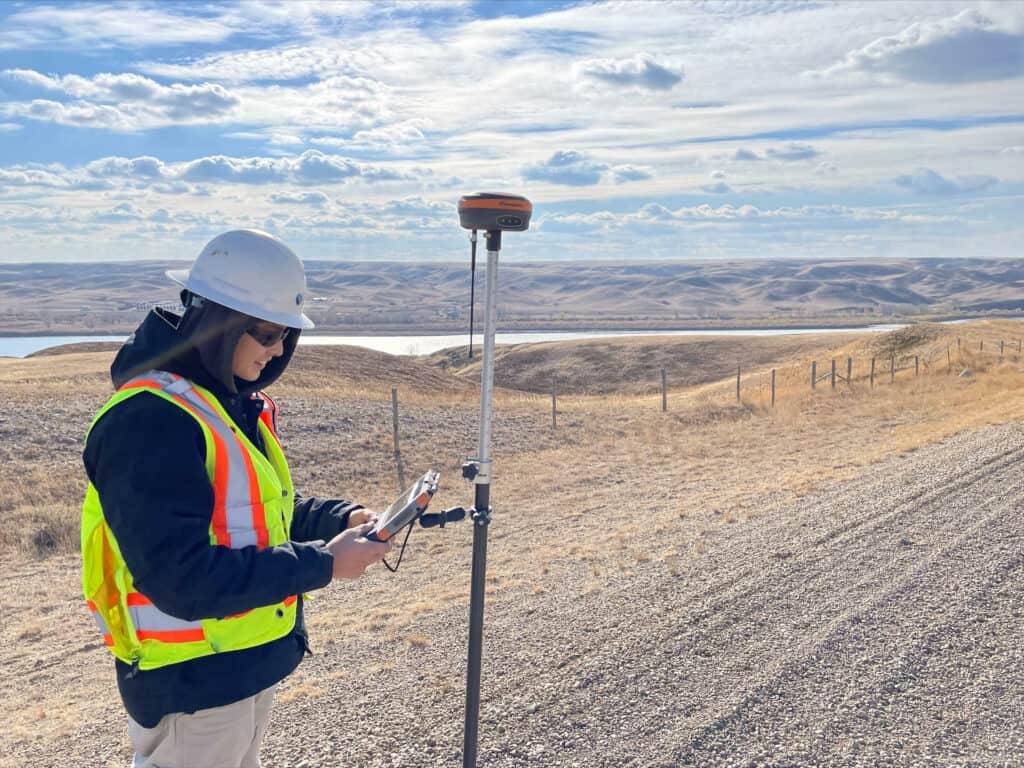
The next factor to consider when purchasing a network rover is to check the message types and age of the base stations in the network. As we stated earlier, a rover is only able to use the messages broadcast by the base to generate a fixed solution. This means that if the network consists of older base stations, that only support an older message such as RTCM 3.0, you are effectively handicapping your modern receiver. For instance, if you have a 7th generation RTK receiver like the Hemisphere S631, on an older RTCM 3.0 network, the S631 can only use GPS GLONASS L1 and L2 to generate a fixed solution. As a result, under canopy and near buildings you will not see the performance you are expecting. Even the difference between a 7th and 6th generation receiver is night and day.
Hemisphere S631 v S321 Canopy Test
The final downside of a network rover, that often goes ignored at the time of purchase is the ongoing subscription costs. Unlike with a base and rover setup, the network rover has ongoing costs. To subscribe to a VRS network can cost upwards of $3500 a year, and you have to factor in the cost of your cellular plan as well. Within 2-3 years, this can amount to the cost of a base station.
Which is Best for Me?
At the end of the day, there are a lot of things to consider when purchasing an RTK system. Thought must be taken to consider what you can afford, and what the capabilities you are looking for. Carefully weigh the advantages and disadvantages of a system. Is a more flexible but initially more expensive option in the base and rover, worth more to you than the time-saving network rover? It depends on your work flow and how you work.
| Base and Rover | Network Rover |
| + Better Multi-Path Performance + Flexibility + Redundancy + Lower Long-Term Cost + Total Control Over Your Setup – Longer Setup Times – Limited Range | + Easy Setup + Lower Intial Cost + No Physical Base Station – Network Availability – Limited to Areas of Network Coverage – Compatability – Higher Long-Term Cost |
Bench Mark Equipment & Supplies is your team to trust with all your surveying equipment. We have been providing high-quality surveying equipment to land surveyors, engineers, construction, airborne and resource professionals since 2002. This helps establish ourselves as the go-to team in Calgary, Canada, and the USA. Plus, we provide a wide selection of equipment, including global navigation satellite systems, RTK GPS equipment, GNSS receivers, and more. We strive to provide the highest level of customer care and service for everyone. To speak to one of our team today, call us at +1 (888) 286-3204 or email us at [email protected]

North America’s #1 supplier of land surveying equipment and instruments.